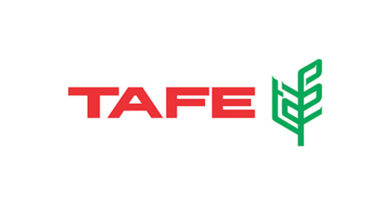Essential to export 8 mt sugar next year: Triveni Engineering MD and V-C Shri Tarun Sawhney
10 August 2022, New Delhi: This is turning out to be a good monsoon for sugar producing areas, which have seen a 4 per cent increase in acreage. Tarun Sawhney, MD & vice-chairman of Triveni Engineering, a leading sugar producer with growing emphasis on biofuels, tells S Dinakar sugar prices will be stable and on a slightly upward trajectory. Edited excerpts:
You just announced your quarterly results and your board has approved expansion plans. How will these plans take Triveni forward as India rebounds from Covid?
Across our business sectors we are out of Covid. The board approved a capex (capital expenditure) of Rs 460 crore for establishment of two dual-feed ethanol plants — the two feeds being sugarcane derivatives, which could be juice or molasses, on the one hand and grain on the other. Pretty much all the grain in Uttar Pradesh, where we are located, is rice — broken rice and excess rice. We hope to commission these plants somewhere between October and December 2023.
What are the focus areas driving investments for Triveni in the next few years?
We have two lines of businesses and two lines within them. So, within the agricultural vertical you have sugar and distillery and within the engineering vertical you have power transmission and water management. We are debottlenecking our existing facilities by October so we can crush more sugarcane and produce more sugar. We expect to produce 5-7 percent more sugar next year.
As far as the distillery business is concerned, with the addition of 450 kilo litre per day next year, it will raise distillation capacity to 1,110 kilo litre per day. When the capacity is used, it gives you a run rate of 32 crore litres a year, a very substantial amount of spirit being manufactured. A vast majority would be ethanol.
Where do you see sugar and sugarcane production this year and next?
For our sugar factories, the monsoon has been perfect. As far as the country is concerned, by and large for the sugar producing areas we have had adequate monsoon. We have seen a 4 percent increase in acreage, and I see more sugarcane being produced across the country. Gross production of sugar for this sugar year ending September 2022 is 39.6 million metric tonnes. Next year we see in excess of 40 million tonnes, maybe 40.5 million tonnes.
Is that adequate to cover the domestic demand and generate a surplus? How do you see sugar prices behaving amid copious production?
For the next year, with that kind of production, I see India exporting 8 million tonnes [of sugar]. As for prices, when we are looking at two years, this year and the next, both ending with the closing stock of 6 million tonnes — which is the consumption of two and a quarter months — I think we will have very reasonable and stable prices going forward in a slightly upward trajectory from where we are today. I don’t see any massive hikes or floors.
If exports aren’t allowed next year, will it cause a domestic surplus, or will it be diverted to ethanol?
I’ve already factored in 4.5 million tonnes for diversion from sugar to ethanol for next year and I think that’s the capacity that exists in the country. The government put restrictions on last year’s export because it wanted to make 6 million tonnes of closing balance. But next year so much is going to be produced. If you produce 40 million tonnes, 4.5 million tonnes go to ethanol, you consume 27-28 million tonnes, so you need to export the 8 million tonnes differential.
That’s absolutely vital.
Let’s turn to biofuels. Currently what percentage of total revenues is contributed by biofuels for Triveni, and where do you plan to take it?
At this point less than 10 percent of revenues comes from biofuels. Going forward we would have 20 percent, and more than 20 percent as well if you consider other lines that are becoming increasingly attractive such as renewable natural gas.
State oil companies have been trying to set up 2G ethanol plants. Are technology and costs issues?
Right now, our investments are in 1G. We are monitoring what happens to 2G as well. There will be three pilot plants [of state oil companies] that will be commissioned this calendar year. After commissioning the government will come out with a policy on the pricing of 2G ethanol. The most important thing, of course, is pricing, and once the government announces prices, I see more investment proposals.
In the case of ethanol, though the overall 10 percent target has been met, blending is uneven across India as we move towards the 20 percent target by 2025-26.
In the path towards 20 percent blending, the states which can do it should lead the way. The Brazil experience was exactly that, wherever you produced the ethanol you started with very high levels of blending and then other places caught up with time.
The main sugar producing states — UP, Maharashtra, Gujarat, Karnataka, AP, Haryana — are leading the way. I see other states catching up very, very quickly. Capacities are shaping up very well because there is a greater transparency on the requirements. It is happening in a far more structured manner than what happened 10 years ago. This year India has done 10 percent [blending], and next year, with about 545 kilo litres being offered, I would anticipate that would equate to about 12 percent ethanol blending.















